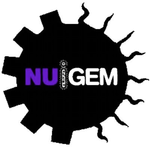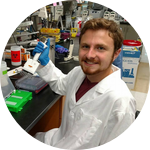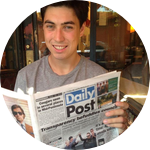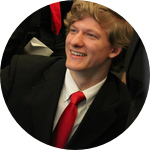Project Results
About This Project
NU iGEM is creating a delivery system for an innovative antibiotic method centered around CRISPR, a powerful gene editing tool. With CRISPR, researchers can design guide RNA to direct the protein Cas9 to cut out any gene from a cell. In our case, we will target antibiotic resistance genes, leaving pathogens defenseless. We want to harness the natural messenger properties of bacterial outer membrane vesicles (OMVs) to package Cas9 and deliver it to cells as a biological Trojan Horse.
Ask the Scientists
Join The DiscussionWhat is the context of this research?
Antibiotics are often employed to treat bacterial infections, but their extensive use and occasional improper administration has led to a rise in the number of antibiotic-resistant strains that pose a significant threat to public health. Drug-resistant infections are difficult to treat and frequently require the use of drugs of last resort or antibiotic cocktails, which are expensive and often poorly tolerated due to severe side effects.
Researchers have found a promising method to combat antibiotic resistance by directing a protein called Cas9 to cleave resistance genes and resensitize bacteria. This method worked in a petri dish; however, delivering Cas9 to bacteria in an infected animal remains difficult.
What is the significance of this project?
Outer membrane vesicles (OMVs) as CRISPR vehicles could be used to treat antibiotic-resistant infections such as Staph and Salmonella, both of which are identified by the Center for Disease Control as urgent or serious threats. In the future, this technology could be modified to keep pace with the emergence of new resistances or infections. Additional potential uses include gene therapy, treating contaminated water sources by altering waterborne bacteria, and combatting bacterial plant pathogens. Ultimately, a vast variety of molecules can be loaded into OMVs for transport into biological systems.
What are the goals of the project?
Our research will involve four steps. First, we plan to generate and purify OMVs in E. coli. Second, we will express Cas9 in E. coli cells and target it to the periplasm (the space between the inner and outer cell membranes) because molecules in this region are incorporated into OMVs. Third, we will test to see if Cas9 has been incorporated into OMVs. Finally, we will combine Cas9-loaded OMVs with a recipient cell strain and assess whether CRISPR is functioning.
Once we finish our project, we will present our findings at a big conference in Boston. We also get to submit the DNA sequences we design that make all of this happen to a database so other scientists can use them and continue expanding on our ideas.
Budget
We need PQS molecules and ultrafiltration materials to generate and purify outer membrane vesicles. Once we insert our Cas9 gene construct into the cells, we will need Western blot and nuclease assay materials to verify the Cas9 protein has entered the OMVs and is working.
Endorsed by
Meet the Team
Northwestern iGEM
We are eight enterprising undergraduates from Northwestern University from a variety of backgrounds coming together to build with biology. Together we are Northwestern iGEM, and individually we are Paul, Sam, Tasfia, Shu, Michelle, Sara, Tyler, and Jordan.
Our lead graduate advisor is Kelly Schwarz. Our three faculty advisors in the Chemical and Biological Engineering department are Josh Leonard, Keith Tyo, and Michael Jewett. We also work with nine other graduate student advisors from their respective labs.
The iGEM (International Genetically Engineered Machines) Competition is the premiere student research competition in synthetic biology, with upwards of 300 participating teams. iGEM researchers from across the globe gather annually at the iGEM Jamboree to present new, engineered biological systems.
Jordan Harrison
My family and friends have done a DIY science experiment on every Labor Day since I was born. I am a rising fourth-year biology major with a botany concentration. I first spent a year and a half in the Medill School of Journalism, so predictably I have a passion for science communication. My personal research interests are in sustainability and plant circadian rhythms. I hail from eastern North Carolina but called my residential STEM high school in Durham, NC home for two years and ignited my interest in life sciences there. My dream is to write for National Geographic.
Shu Huang
I am a rising junior majoring in chemical engineering, but I'm not fond of those thermo classes with complicated derivations. After learning about genetics and getting a chance to do some cloning experiments, I fell in love with synthetic biology and decided to pursue a biotechnology minor. (I'm always excited about running gels.) When not in the lab, I'm probably cooking, playing with cats or watching Japanese anime and TV shows.
Sam Davidson
I've been interested in genetic engineering since I was eight, when I read a relevant article in a copy of TIME for Kids in the back of my grandma’s car on the way to go see a movie. Since I never shut up about space and AI technology, my friends often wonder why I'm not pursuing one of those fields instead. If I were pursuing one of those fields, I’d probably never shut up about genetic engineering.
Tasfia Azim
I didn’t learn how to properly pronounce my name (Thushfia) until third grade. But that was a dark time in the past. Today, I am a rising junior studying chemical engineering and pursuing minors in biotechnology and creative writing. You can say that I'm indecisive about my interests. When I'm not in the lab, I'm probably writing stories about mutant flying squirrels and consuming large volumes of apples and hazelnut coffee.
Tyler Lazar
My first name is John. The other John Tyler (the tenth president of the United States) died on January 18, which is coincidentally my birthday. As a chemical engineer minoring in biotechnology and sociology, my research interests include antibiotic discovery, medicinal plant biology, and sustainability. Outside of laboratory, I enjoy running in the mountains, sipping tea in San Francisco, and grappling with life’s mysteries.
Paul Perkovich
I am a rising senior chemical engineer pursuing a minor in biotechnology because NU doesn’t offer a core biological engineering major. I have previously been involved in research developing a surface-based microfluidic bioreactor. I love learning new things and frolicking in the cold snow while my friends complain about it. My interests include applying synthetic biology to sustainability, telling bad science jokes, and playing in the marching band.
Sara Boyle
From early childhood, I have always loved knowing exactly how everything works. Around the age of five, I realized that the questions that were the most interesting were the ones my parents didn’t know the answers to, so I gave up on my dream of being an artist-veterinarian-doctor and decided to become a mad scientist. Now I am a rising senior studying neuroscience and cognitive science with a minor in computer science, and am quite content. My interests include violin and reading, but mostly brains.
Additional Information
Follow us on Twitter @igem_nu
Cover image from Li et al., "Gram-Negative Bacteria Produce Membrane Vesicles Which Are Capable of Killing Other Bacteria." Journal of Bacteriology, 1998.
Project Backers
- 52Backers
- 100%Funded
- $2,014Total Donations
- $38.73Average Donation









